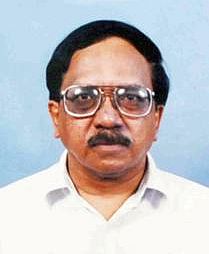Latest Contributions
Once upon a time: Train journey from Bangalore to Mysore
Category:

E.R. Ramachandran was born in 1942 in Belgaum. He has settled in Mysore after working in Government and Philips Organizations. He has contributed to the Hindustan Times, Cricketnext.com, and is a regular contributor to Churumuri and humour magazine Aparanji in Kannada.
Many years ago - in the 1950s - travel between Bangalore and Mysore used to be almost like travel to the Moon and back. The distance had no comparison but the efforts, the travel time, and the journey itself had the same excitement and anticipation.
When you decided to go to Mysore, the news itself would create a sensation around, becoming a sort of talk of the town. All sorts of people met you and enquire: "Is everything all right?" Most enquired whether your uncle's cow is likely to give birth to a calf or something - otherwise why this decision to go to Mysore, all of a sudden.
You had to tell the Jataka-horse driver Syed or Raju previous evening itself so that he feeds enough grass and water early in the morning for the horse to withstand the run up to railway station and back. The horse's face would be completely covered with a cloth so that no one could see what the horse is eating.
Late night, you packed your hold-all. First came a layer with rice of Coimbatore Sanna or Rathna chudi for your relatives where you have planned to stay. Of course you have posted a card saying you will be coming to Mysore for a couple of days and staying with him. Most letters reached after you were with them. Only telegrams reached just when you had reached your destination.
After rice, you packed Sugandhi adike, betel nuts which your aunt will die for to get it from anywhere and Passing show cigarettes for your farmer uncle to smoke secretly when he was alone, and Ambal Nashys, snuff which he had to have before going to his lands for work from morning to evening. Then your clothes, and Railway chombu (Jar) filled with water.
Your wife would have got up at 2 am to prepare your lunch - nimbehannina chitranna, sandige, mosaranna for the journey. She would use a hearth using wood logs, or primus stove which woke the entire neighborhood, if she was modern. These would go in a separate gunny bag along with kodubale, chakli and rave unde, partly for journey and rest for uncle and his family.
In the last minute she will pack a blouse piece and smear with haldi and kumkuma for the aunt. As you worry Syed has not yet come, you will see him parking the carriage, shouting the horse to halt.
He loaded your baggage, grumbling about its weight, enquiring about amma's health in between. Whole neighborhood would gather in front of your house as if you would never return back. To your wailing children you promise to take them next time. Finally, you leave amidst suggestions you should not waste any more time lest you miss the train.
The Jataka-driver will urge you to move up the carriage, as he would whirl his stick and encourage his horse to fly. After you dispose of the driver with 8 annas (1 rupee = 16 annas), he would grumble for more, complaining the weight of your hold-all. You would give him another 3 paisas (1 anna = 4 paisas), the lowest denomination coin with a hole in the middle.
When you reached the ill-lit Railway Station, you found other passengers moving around like shadows.
You bought a ticket that would cost Rs 2.50 to Mysore. You loaded your luggage yourself making sure railway jug and your lunch stayed next to you. This would save you the 1 anna that you would have to pay a porter.
There would be a series of whistles back and forth from the front end of the train to the back, with red and green flags waved intermittently. Then, the coal-driven engine would let out a wail, and start off, gingerly pulling the train forward. After repeated stops within the station itself, finally your journey would start.
By the time Closepet (now Ramnagar) came, most passengers would be asleep. Some would be chattering away at the heat and when it will rain. This was the only topic that has remained worthy of news and discussion last half a century.
At Maddur all the passengers would get down to buy Maddur-wade, the snack which made the town famous till today.
At Srirangapatna, people would dash to the windows to see river Cauvery while riding over the bridge and toss coins praying for the well-being of their families.
As the train finally steamed into Mysore, it would be eons since it left Bangalore. All passengers had a coat of black soot, apart from friendly Anglo-Indian engine drivers. When you stood near the door you would see your uncle with his farm-helper waving at you. You would get into a colourful Tonga and a cleaner town Mysore as your uncle asked him to go to Vontikoppal.
© E R Ramachandran 2016
Comments
Add new comment